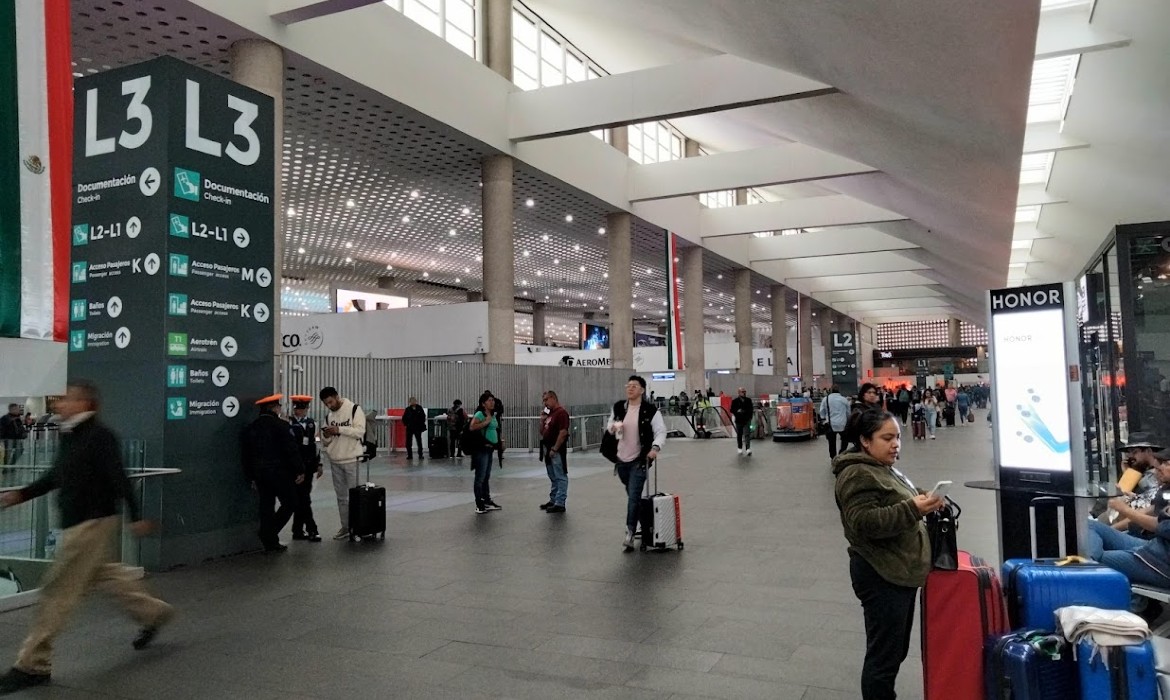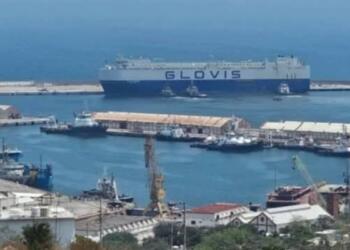
For this year, which will be marked by the change of federal Government, the Mexico City International Airport (AICM) will carry out an investment of two billion 200 million pesos for maintenance, conservation, and modernization works.
This was announced by Rear Admiral José Ramón Rivera Parga, general director of the AICM, during the morning conference on May 2, where he specified that, of this amount, one billion 495 million pesos correspond to fiscal resources and 705.7 million pesos are from the airport’s own funds.
He pointed out that some of these works are already in progress, while the majority are in public tender.
The director detailed that 558.6 million pesos will be invested in the acquisition of 18 X-ray machines and 10 computed tomography scanners for the review of checked baggage to replace the existing equipment due to age. In addition, to reinforce the inspection points, 17 X-ray machines and 12 explosive detectors will be acquired.
He added that 547.1 million pesos will be invested in rehabilitation works on the runways and mentioned that this month work has already begun on runway 05 right 23 left, which consists of cutting and replacing the asphalt pavement, work on lateral margins, safety strips, and trenches, as well as restructuring and adaptation of electrical systems and modernization of LED lighting systems.
488.9 million pesos will be invested in various maintenance, preventive, and corrective works on the facilities such as roof waterproofing, repair of leaks and filtrations; repairs to the rainwater drainage system; painting of buildings, replacement of ceilings, and floors in some areas, among others.
Rivera Parga commented that 331.9 million pesos will be invested to rehabilitate Taxiway Bravo, which is the most important and trafficked by aircraft at Terminal 1.
“This maintenance is necessary because its reconstruction from the base, subbase, and up to the asphalt pavement is necessary, as a result of ground settlements and water seepage into the subbase,” he explained.
The director announced that two studies and projects worth 86.8 million pesos are also planned, which will allow the execution of works scheduled for 2025.
In addition, 50 million pesos will be invested for the multi-year maintenance of drainage systems and pump rooms for runways and taxiways.
He indicated that both terminals will have their sanitary cores rehabilitated, works that involve adjustments and replacement of hydraulic, sanitary, and electrical installations, as well as the replacement of bathroom furniture, for which they will invest 39.3 million pesos.
With an amount of 35.5 million pesos, 12 elevators will be replaced; in addition to the planned acquisition of a vehicle with a height rescue ladder for the Salvage and Firefighting team, for an amount of 32.8 million pesos. Also, he added, 29.8 million pesos will be invested in the replacement of air conditioning equipment.
Balance of Velázquez Tiscareño’s management
For his part, the former general director of the AICM, Carlos Ignacio Velázquez Tiscareño, gave a balance during his tenure – from July 2022 to March 2024 – and commented that, upon his arrival, they found various irregularities, the main one being the vacuum of authority characterized by lack of order; lack of communication and coordination among authorities prevailed, as well as corruption in Immigration and Customs areas.
He also mentioned delays in all passenger service processes, such as immigration and customs procedures, baggage delivery, baggage theft; and airlines that did as they pleased at the expense of the passenger, prioritizing their commercial interests and outside the law.
He also mentioned illegally occupied spaces with a heavy accumulation of debts, which negatively impacted the airport’s finances, unjustifiably tolerated. “In short, the authority at the airport was not in charge.”
For this reason, he said, from 2022 to 2024, an investment of four billion 269.9 million pesos will have been made between fiscal resources and self-generated resources. “During this administration and to date, there have been no complaints, not even dissatisfaction, about the bidding processes, although there have been annoyances in some cases,” he said.
Velázquez Tiscareño said that resources grew in six main areas: runways, terminal buildings, equipment, electrical systems, studies and projects, as well as routine maintenance, which added up to a total of two billion 69.2 million pesos.
He added that 613.6 million pesos were paid for acquisitions for the modernization and maintenance of terminal buildings, highlighting the structural reinforcement of T2, which was carried out by the Government of Mexico City, without affecting operations or passengers.
408.7 million pesos were invested to modernize existing equipment, highlighting the acquisition of five firefighting and extinguishing units, he said.
Velázquez Tiscareño mentioned that 89.9 million pesos were spent to modernize electrical substations, visual aid systems on runways, and the rehabilitation of drainage systems and pump rooms.
Likewise, 33.4 million pesos were spent on executive projects, necessary for the execution of ongoing works, and, in addition to all the above, routine maintenance was carried out on various facilities on the air and ground sides for an amount of 298.3 million pesos.
To address airport saturation, he commented, the management of schedules was improved, since previously an average of 600 illegal flights per month were counted that did not correspond to the official assigned schedule, this for purely economic purposes of the airlines.
With full knowledge and participation of the airlines, measures ordered by the authorities were adopted, a first reduction from 61 to 52 operations per hour was applied, schedules were no longer assigned to cargo airlines due to the closure of the airport to such dedicated cargo operations and were moved to the Felipe Ángeles International Airport (AIFA). He recalled that this year also saw the entry into force of the second reduction from 51 to 43 operations per hour.
To improve security at the airport, the Integral Airport Security Strategy was implemented, so since February 2022, 1,500 naval elements have been commissioned to security tasks.
This measure, he added, was complemented months later when in July 2022 the airport administration was assumed and the figure of Single Command was created by presidential order to strengthen decision-making, coordination, and management capabilities, and to address bottlenecks and authority vacuums as mentioned at the beginning.
“With this change of direction, organized crime is combated more efficiently, mainly in immigration and customs areas,” he stressed.
Bag thefts and lootings were drastically reduced, and in less than two years, 819 attempts to steal luggage were thwarted, robberies to users were reduced, mainly in currency exchange houses, with an ongoing strategy of reordering them and reducing them by half.
He highlighted the seizures of approximately 10,629.425 kilograms of various illicit substances, nine thousand 241 kilos of methamphetamines, 324.62 kilos of fentanyl, 192.625 kilos of cocaine, and 871 kilos of other psychotropic substances, among other actions.
With information from A21
Comment and follow us on Twitter: @GrupoT21














